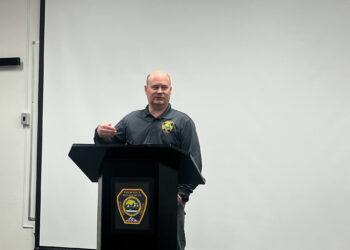A bellwether
By Emily Wolfe Explore Big Sky Managing Editor
Weddell Seal pups are born during the Antarctic spring, when it’s usually around -10 F, dry and windy. Their birthing grounds are farther south than those of any other mammal.
Having spent winter 150 miles north in the Ross Sea feeding on fish, octopus and krill, the mothers are 1,000-1,200 pounds when they give birth – or about the weight of a horse, says biologist and Montana State University professor Jay Rotella, who leads a study on the animals.
Holding their breath for up to an hour, they swim long distances south beneath the frozen sea ice along the continent, using tide cracks to breathe. They return to the same colony each year.

Their largest predator, Orcas, cannot swim as long beneath the ice, so when the mothers haul out to give birth, their pups are safe during the 4-6 weeks it takes them to nurse and learn to swim. When the pups are weaned, the females return to the water and breed.
Only about 20 percent of pups survive to breeding age – 7 or 8. Those that do may live into their teens and 20s, Rotella said, noting that the oldest recorded animal is 33.
The Ross Sea is perhaps the most pristine area of ocean on Earth, and although the seals aren’t endangered, studying them gives scientists “bellwethers that tell us [if] this last best place in the ocean is having problems,” Rotella said.
Don Siniff, of the University of Minnesota, initiated this study in 1967. Rotella and Bob Garrott took the project over in 2001. Find more at weddellsealscience.com.
Both photos here were obtained under NMFS Permit No. 17236.











